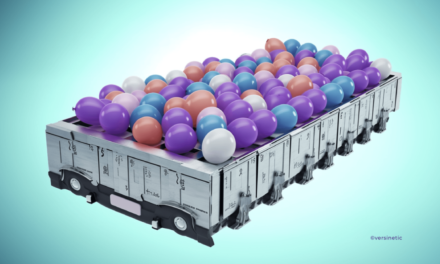Making Lithium-Ion Battery Recycling Cheaper and Less Toxic
Li-ion batteries are touted as the perfect solution to using fossil fuels, powering everything from wireless earbuds to smartwatches. They’re a ubiquitous part of people’s daily lives and are only becoming more important as EVs grow in popularity. So why are they still so hard to recycle?
The Lithium Conundrum
Electric vehicle production will exceed 50% of total vehicle production by 2030, with manufacturers planning to build 54 million EVs in that year alone. That translates into 54 million new batteries — most of them made of lithium. Although electric vehicles play a vital role in decarbonizing the transportation sector, manufacturers must make major changes for the industry to be truly green.
Continuing to mine lithium at the current rate means the precious metal could run out as soon as 2025, so recycling it is paramount. But consumers only recycle around 25% of their spent electronics and an even smaller percentage of EV batteries, so most lithium batteries end up in landfills.
Manufacturers rarely consider Li-ion batteries’ end of life when designing them. Energy efficiency trumps recyclability, with internal components welded together and hard to separate.
The cathode is very difficult to remove from the aluminum foil inside a lithium-ion battery. Recycling facilities must employ solvent dissolution methods, thermal treatments, ultrasonic-assisted separation, sodium hydroxide dissolution or mechanical separation to separate the two. Then, they typically use pyrometallurgy or hydrometallurgy to extract the valuable metals.
Pyrometallurgy consumes an enormous amount of energy and leads to high metal loss, while hydrometallurgy requires a large quantity of chemicals such as hydrochloric acid, sulfuric acid or nitric acid. No matter which method recycling facilities employ, recovering valuable materials from Li-ion batteries is expensive and inefficient, and many countries lack the resources to build and operate these facilities in the first place.
Emerging Recycling Technologies
The good news is lithium batteries are a relatively new invention. Scores of chemists and engineers are racing to find an answer to the recycling problem, harnessing the power of large-scale collaboration across the globe. Here are some of the most promising solutions.
Biometallurgy
In contrast to pyro- and hydrometallurgy, biometallurgy uses acid-producing bacteria or fungi to leach the metals out of spent Li-ion batteries. This technique is also called bioleaching. The process is low-cost, highly efficient and more environmentally friendly than other extraction methods, and it requires less equipment.
Aspergillus niger — a common mold species — produces citric acid that researchers found to be more effective than gluconic, malic or oxalic acid in leaching metals out of Li-ion batteries. Other promising species include Acidithiobacillus ferrooxidans — often used for recovering copper in industrial settings — as well as Acidithiobacillus thiooxidans, another bacterium used in bioleaching. Additionally, scientists are investigating the ability of Alicyclobacillus species to oxidize sulfur and Sulfobacillus to oxidize iron.
Enhanced Automation
Automation could boost the efficiency of Li-ion battery recycling. Advanced robots could sort, break down and recover valuable metals from the batteries while eliminating the risk of electrical or chemical injuries to people.
They could also perform better at tasks requiring fine motor skills. Picking apart a complex battery may require more dexterity than a human being possesses, but a machine could deftly sort through the various pieces of metal.
One hurdle to overcome before automation can improve is the sheer variety of internal battery designs. Engineers and manufacturers will need to agree on a standardized design to create an assembly line process for deconstructing batteries.
Using Eutectic Salt
A eutectic solution has a lower melting point than any of the chemicals that comprise it. As demonstrated in a recent publication in the Journal of the American Chemical Society, a combination of lithium iodide and lithium hydroxide melts at a lower temperature than either of the two salts. In fact, it becomes a liquid at lower temperatures than many other chemical solutions.
Scientists were able to simplify the recycling process and restore spent batteries with a mixture of cobalt(III) oxide, manganese dioxide and the eutectic salt solution. This breakthrough offers a potential solution to the problem of replenishing batteries at a low cost. It uses less energy and natural resources than building a battery from scratch, and it decreases the temperature and time needed for recycling a Li-ion battery.
The Dawn of a Circular Lithium Economy
Electric vehicles, smartphones, computers and power tools have enhanced the lives of billions of people, but they contribute to vast amounts of pollution and dwindling lithium supplies. Advances in bioleaching, automation and chemistry may hold the key to making lithium-ion battery recycling cheaper and less toxic. Or, a discovery might render these methods obsolete. Perhaps engineers will find a way to make a different metal more efficient for battery production.
Although production currently outpaces recycling, it shouldn’t take long before scientists pioneer efficient metal recovery techniques — and it’s only a matter of time before humans have no other choice.











